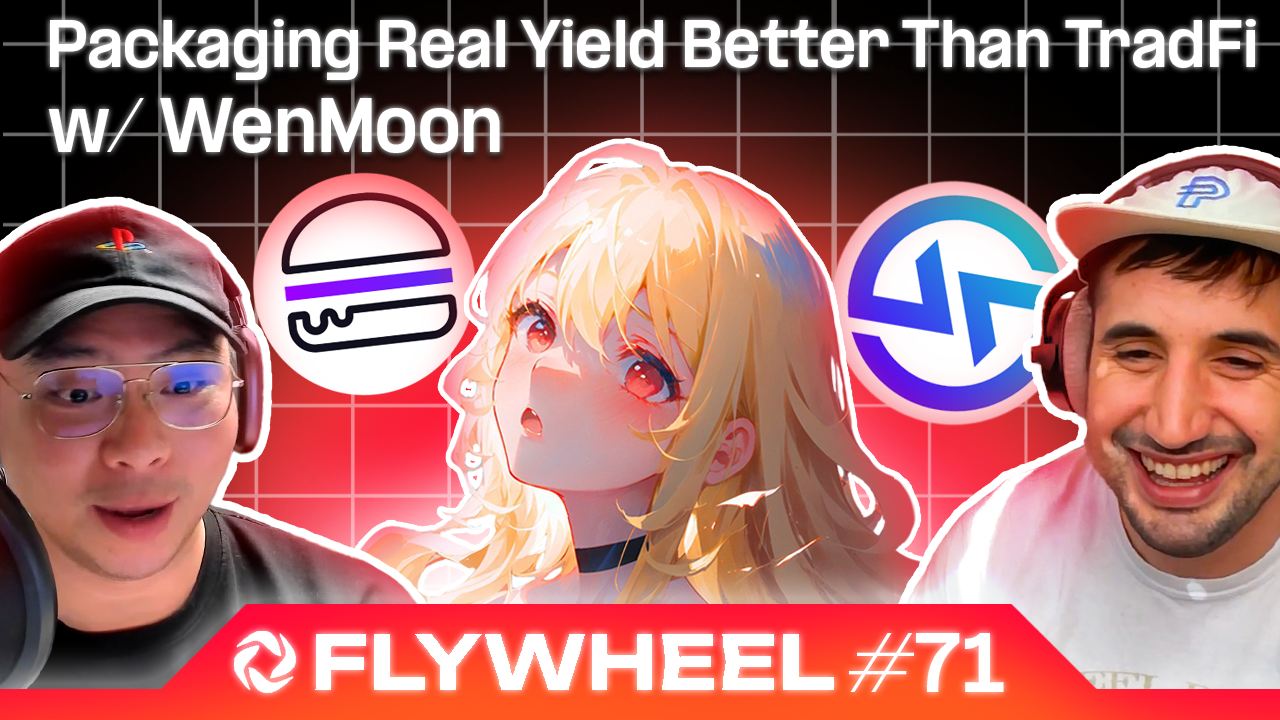Action Items
This week Umami Finance Developer WenMoon joined Flywheel for his second appearance. This 1v1 interview dives into Wenmoon's background and path to crypto, his views on the broader market, and a full breakdown of their most recent Umami v2 Vaults.
About the Umami v2 Vaults
The Umami V2 Vaults are a novel way that traders can earn delta neutral yields using a mixture of crypto and GLP. V2 is an upgrade to the older vaults, which had issues keeping delta neutral at a marginal cost. WenMoon told us “V1 didn’t work because it had very high rebalancing costs. We were doing what we call many external trades, especially on chain compared to any strategy off chain or on a centralized exchange, it's much, much more expensive.”

WenMoon elucidates, “The vault strategy is quite simple. All it does is it buys GLP and farms the GLPs. Trading fees and everything, but then also shorts and longs all the other assets so that your exposure is only to the asset that you wanted exposure to.” This ensures that whether an investor is bullish on ETH or seeks delta neutral exposure through USDC, Umami's GLP Vaults accommodate these preferences
For those who seek higher yields and are willing to commit to a 14-day withdrawal waiting period, Umami offers a ‘boosted’ version of each vault.
The vaults uses an "internal netting" strategy, allowing the protocol to trade asset exposures like BTC, ETH, and USDC among itself. It leverages the fact that you are on chain to make a better and cheaper experience for everybody involved,” he said. The process involves different investors coming together, each desiring exposure to different assets – BTC, ETH, USDC – and trading exposures amongst themselves through the Umami Vaults, reducing the need for external trades and thereby lowering costs.

Participants signal their desired exposures, enabling mutual benefits through a network. “Since we’re all helping each other, we all have this sort of network effect where the fact that we found each other is actually a good thing to all of us. It’s Pareto optimal for us to give each other these trades and exposures for free.” This network effect eliminates the need for funding, opening, and closing costs, offering a win-win scenario for all involved.
Umami executes internal netting by creating synthetic exposure with protocol assets. “Everything can be synthetic, and all the trades can be placed in this imaginary plane. Everything is collateralized by our yielding position, our GLP, which takes up all of the trades that we ever need to do.” This strategic move ensures no risk of liquidation and no cost, allowing users to maintain their assets without compromising security.
“So if you come with BTC, we'll make sure that as BTC price goes up, you make money. And as BTC price goes down, you lose money as you would normally want,” WenMoon said.
In case the positions can’t be hedged internally, Umami will use external venues like Aave to complete the hedge.
WenMoon compared their offerings with traditional finance, “None of these TradFi guys have anywhere in a centralized exchange that allows them to use GLP as collateral like we do. Nowhere they can find any free trades like we can. Nowhere they can find any liquidation free perpetuals.”

For more analysis of the show, come join our friend.tech group where we are posting exclusive show notes and other commentary on Umami. Don't miss out on our ideas for their upcoming Arbitrum grant proposal.




